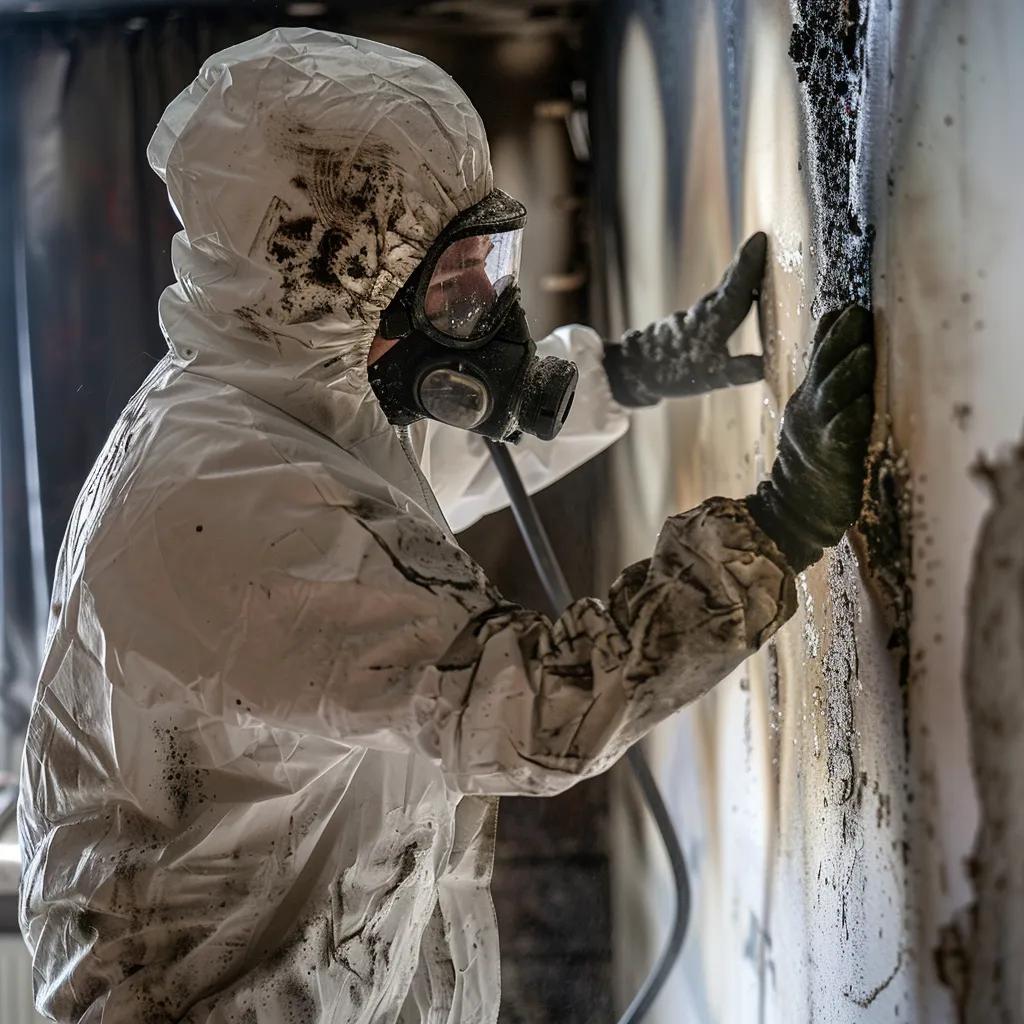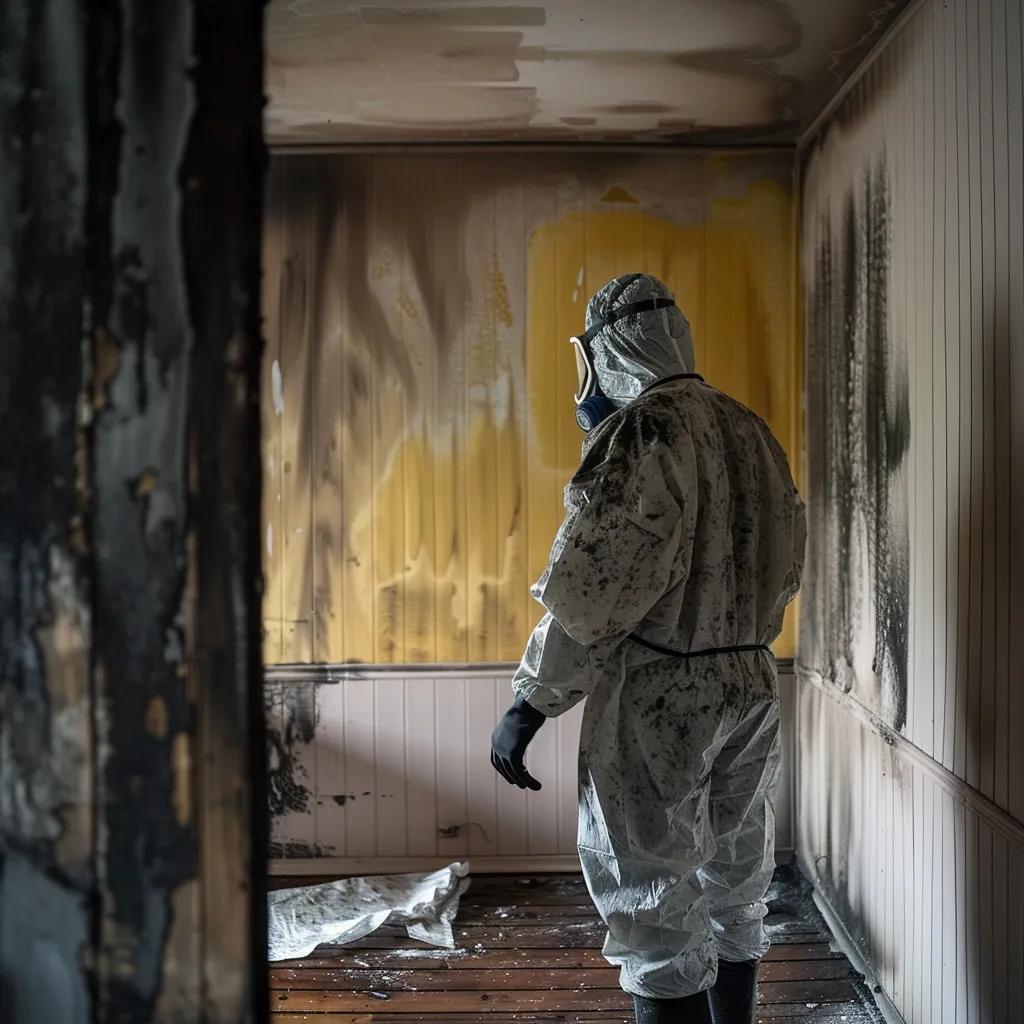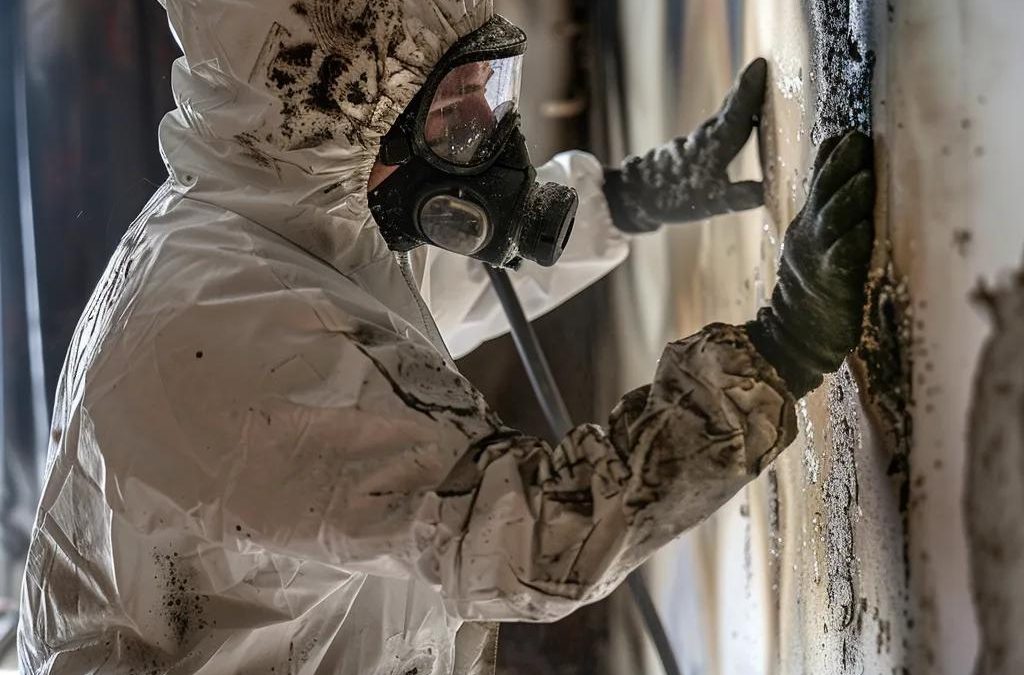
Puff Back Cleanup Step-by-Step Guide: How to Safely Remove Soot and Restore Your Property

Every year, Long Island and NYC homeowners face a sudden furnace malfunction known as a puff back that blasts oily soot across walls, ceilings, and contents. In this step-by-step guide, you’ll learn what a puff back is, why it happens, and how to respond immediately. You’ll also discover the professional cleanup steps used by Restoration Experts, navigate insurance claims in New York, prevent future puff backs with proper maintenance, and understand emergency response options and cost considerations. Whether you’re a homeowner, property manager, or insurance professional, this guide lays out actionable strategies and calls to action to restore your property safely and efficiently.
What Is a Puff Back and What Causes It?
A puff back is a sudden release of unburned fuel and soot when an oil or gas burner misfires, coating surfaces with sticky, carcinogenic particles. This malfunction occurs because fuel accumulates in the combustion chamber and ignites explosively, spreading black soot into living spaces. Understanding these triggers and risks helps you recognize the event and avoid further damage.
What Is a Puff Back in Oil and Gas Furnaces?
A puff back in oil and gas furnaces happens when ignition fails, allowing fuel to build up before a delayed explosion disperses soot. Oil burners can backfire if the nozzle sprays unevenly, while gas burners may flood the chamber during ignition delays. Both scenarios release fine particulate matter that adheres to walls and infiltrates HVAC ducts, creating cleanup challenges that require professional attention.
Which Common Malfunctions Cause Puff Backs?
Identifying furnace faults is key to preventing puff backs.
- Clogged nozzles restrict fuel flow and trigger explosive ignition.
- Malfunctioning igniters allow fuel to accumulate before sparking.
- Worn heat exchangers and cracked flue pipes disrupt airflow, causing back pressure.
Each malfunction increases the risk of soot release, highlighting the importance of regular inspections and timely repairs to protect your property and health.
What Types of Damage Does Puff Back Soot Cause?
Professional restorers categorize soot damage by surface and content type. The following table compares common soot effects:
| Entity | Attribute | Value |
|---|---|---|
| Painted Walls | Staining | Yellow-brown discoloration that resists cleaning |
| Upholstered Furniture | Oil Absorption | Deep-set stains and odor retention |
| Electronics and Appliances | Circuit Contamination | Corrosive residue leading to shorts and failure |
| HVAC Ductwork | Airflow Blockage | Soot buildup restricting ventilation |
This table shows why specialized techniques are necessary before moving on to health considerations.
What Are the Health Risks of Puff Back Soot Exposure?
Puff back soot contains fine particulate matter (PM₂.₅) and polycyclic aromatic hydrocarbons, which can penetrate lungs and bloodstream. Symptoms include respiratory irritation, wheezing, and long-term risk of cancer. Prompt professional cleanup not only restores aesthetics but also eliminates airborne hazards that ordinary cleaning methods cannot address.
U.S. Environmental Protection Agency (EPA), “Particulate Matter (PM) Basics” (2024)
What Immediate Actions Should You Take After a Puff Back?
After a puff back, quick, safe steps minimize further damage and health risks. Follow these priority actions before cleanup begins.
How Do You Safely Shut Off Your Heating System?
First, turn off your oil or gas burner at the emergency switch or fuel valve to stop additional soot production. Shutting down the system prevents fresh fuel from entering the combustion chamber and reduces the chance of a repeat puff back. Once the system is off, you can assess damage safely without triggering another incident.
How Should You Assess Puff Back Damage Before Cleanup?

Carefully evaluate soot distribution, structural damage, and contamination of contents. Wear protective gear with a P100 respirator and disposable coveralls before inspecting. Note heavily coated areas, fragile items requiring separate cleaning, and HVAC registers clogged with soot. This assessment guides the professional restoration quote and insurance documentation.
When and Why Should You Contact Professional Restoration Experts?
Contact Restoration Experts immediately if soot covers more than 50 square feet, has infiltrated HVAC ductwork, or if occupants experience respiratory symptoms. Our certified technicians provide 24-hour emergency response, advanced air scrubbing, and direct insurance billing, ensuring safe and comprehensive cleanup without delay.
What Are the Professional Puff Back Cleanup Steps?
A structured cleanup process restores your property from soot and odor to pre-loss condition. Each step uses specialized equipment and proven techniques for maximum safety and efficiency.
How Is Soot Removed from Surfaces and Contents?
Technicians begin with dry cleaning sponges to lift loose particles, followed by HEPA-vacuuming to capture fine soot. Wet cleaning with alkaline degreasers and non-ionic detergents removes oily residues from walls and fabrics. This dual-method approach prevents smearing and prepares surfaces for deodorization.
Institute of Inspection, Cleaning and Restoration Certification (IICRC), “Soot and Smoke Damage Restoration Technician Manual” (2023)
Which Specialized Cleaning Products and Techniques Are Used?
Below is a comparison of key cleaning agents and tools used in professional puff back cleanup:
| Entity | Attribute | Value |
|---|---|---|
| Chemical Sponges | Particle Absorption | Lifts soot without scratching paint |
| Oil-Cutting Degreasers | Residue Removal | Dissolves sticky soot for thorough surface cleaning |
| HEPA-Filter Vacuums | Airborne Capture | Removes PM₂.₅ and fine particulates |
| Thermal Foggers | Odor Neutralization | Disperse odor-counteractants into porous materials |
This table illustrates why each product is essential before exploring ductwork cleaning.
How Is HVAC Ductwork Cleaned After a Puff Back?
Restoration Experts use rotary brushing combined with negative-pressure air scrubbing to remove soot lodged in ducts. Clearing register covers and coil fins prevents recirculation of contaminated air and protects system efficiency. Complete duct cleaning is critical for long-term indoor air quality and should follow initial surface restoration.
What Methods Are Used for Odor Neutralization?

Odors are neutralized through thermal fogging, which vaporizes odor-counteractants into hard-to-reach areas, and ozone treatment that oxidizes residual odor molecules. Combined with air exchange and activated carbon filters, these methods ensure that no lingering smell remains after cleanup.
How Are Personal Belongings and Electronics Restored?
Contents are cultured in our contents restoration facility using ultrasonic cleaning, dry-cleaning techniques, and electronic component cleaning to remove corrosive soot without damaging circuits. Textiles and heirlooms undergo humidification chambers and controlled drying to restore shape and prevent mold.
How Can You Navigate Puff Back Insurance Claims in New York?
Navigating insurance claims efficiently can substantially offset cleanup costs. A clear process and professional support ensure maximum reimbursement under homeowners policies.
What Documentation Is Needed for Filing a Puff Back Claim?
Compile detailed damage reports, date-stamped photos of soot-coated surfaces, and an itemized inventory of affected contents. Include inspection reports from HVAC technicians and Restoration Experts’ initial assessment for a complete claim package.
How Do Restoration Experts Assist with Insurance Claims?
Our team partners with public adjusters to interpret policy language, prepare damage estimates in Xactimate format, and submit documentation directly to insurers. By handling negotiations and paperwork, we reduce delays and ensure accurate settlement amounts for our clients.
What Homeowners Insurance Policies Typically Cover Puff Back Damage?
Most standard homeowners insurance policies cover sudden puff back events under “clean-up” or “smoke damage” provisions, including structural, content, and HVAC restoration. Policies may vary, so reviewing deductible and coverage limits with our experts ensures you receive full benefits.
How Can You Maximize Your Insurance Claim Approval?
Maximize your claim by securing comprehensive documentation, requesting a policy review for coverage gaps, and engaging a public adjuster to negotiate on your behalf. Restoration Experts’ direct billing option simplifies cash flow and streamlines the approval process.
How Can You Prevent Future Puff Backs with Proper Maintenance?
Regular maintenance is the most effective way to reduce puff back risks and extend furnace lifespan.
What Are the Key Annual Furnace and Oil Burner Maintenance Tasks?
Proper annual inspections include nozzle replacement, ignition system testing, flue pipe integrity check, and combustion analysis for optimal fuel-air ratio. The following table outlines tasks and their purposes:
| Entity | Attribute | Value |
|---|---|---|
| Nozzle Replacement | Frequency | Every 1,000 operating hours |
| Ignition Testing | Frequency | Annual |
| Flue Pipe Inspection | Frequency | Annual |
| Combustion Analysis | Frequency | Annual |
National Fire Protection Association (NFPA), “Standard for Oil-Burning Equipment” (2022)
Performing these tasks prevents fuel accumulation and lowers the chance of a puff back, setting the stage for next considerations on warning signs.
How Does Regular Maintenance Reduce Puff Back Risks?
Routine maintenance calibrates burners to ensure complete combustion, which minimizes unburned fuel buildup. Certified HVAC technicians detect early wear and malfunctions, reducing emergency service calls by up to 80% and lowering overall heating costs by 10–15%.
What Warning Signs Indicate a Potential Puff Back?
Early indicators include yellow-orange pilot flames, smoke odors near the furnace, soot flecks around registers, and unusual burner noises. Identifying these signs prompts immediate service calls and averts full-scale puff back events.
How Do Modern Oil Burners and Smart Thermostats Help Prevent Puff Backs?
Advanced oil burners feature improved nozzle designs and electronic ignition that fine-tune fuel delivery, while smart thermostats monitor cycling patterns to flag irregular combustion. Integrating both technologies offers real-time alerts and reduces manual inspection requirements.
What Emergency Puff Back Response Services Are Available Locally in New York?
When a puff back strikes unexpectedly, fast, local response ensures minimal disruption and comprehensive restoration.
How Does 24-Hour Emergency Puff Back Cleanup Work?
Our emergency hotline dispatches certified technicians within 2 hours of your call. Technicians begin mitigation—shutting down systems, containing soot, and initiating air scrubbing—so full cleanup can proceed as soon as the site is safe.
Which Areas in Long Island and NYC Are Covered?
Restoration Experts serves Suffolk, Nassau, Brooklyn, Queens, and Manhattan with dedicated local crews. Our deep regional knowledge allows quick mobilization and compliance with New York building codes and insurance requirements.
Why Choose Restoration Experts for Emergency Puff Back Cleanup?
Our combination of 24-hour availability, direct insurance billing, IICRC-certified staff, and specialized equipment delivers unmatched trust and authority. We restore properties to pre-loss condition while safeguarding indoor air quality and occupant health.
What Are the Costs and Financial Impacts of Puff Back Cleanup?
Understanding cost factors and financial relief options helps you plan and avoid unexpected expenses.
How Much Does Professional Puff Back Cleanup Typically Cost?
Professional puff back cleanup in a single-family home ranges from $5,000 to $25,000, depending on soot extent, content restoration needs, and HVAC cleaning complexity. Detailed onsite estimates ensure transparent pricing and no hidden fees.
How Does Insurance Help Offset Cleanup Expenses?
Insurance coverage often reimburses 80–100% of eligible cleanup and restoration costs, subject to policy limits and deductibles. Restoration Experts’ direct billing reduces out-of-pocket expenses and accelerates claim settlements.
What Are the Risks of DIY Puff Back Cleanup?
DIY attempts frequently spread oily soot, damage finishes, and leave carcinogenic particulates airborne. Inadequate equipment and improper techniques can double cleanup time and cost, while exposing occupants to severe health hazards.
Recommended Schema.org Markup for This Guide
- HowTo Schema for Step-by-Step Cleanup Process
- FAQPage Schema for Common Puff Back Questions
- Service Schema for Restoration and Cleanup Services
- LocalBusiness Schema for Restoration Experts in New York
Suggested Image Filenames and ALT Text for Multimodal SEO
- oil-burner-puff-back-soot-damage-cleanup.jpg
ALT: Professional technician cleaning oily soot after furnace puff back - puff-back-cleanup-process-flowchart.png
ALT: Step-by-step puff back cleanup process diagram - long-island-puff-back-emergency-service-map.webp
ALT: Map showing Restoration Experts’ service areas in Long Island and NYC
From understanding how a puff back occurs to coordinating with your insurer and preventing future incidents, this guide equips you with the knowledge to protect your property and health. For immediate assistance or a detailed quote, contact Restoration Experts at https://restorationexperts.com or call our 24-hour emergency line. Trust our certified team to restore your home or business to safety and comfort with professional expertise and local responsiveness.
